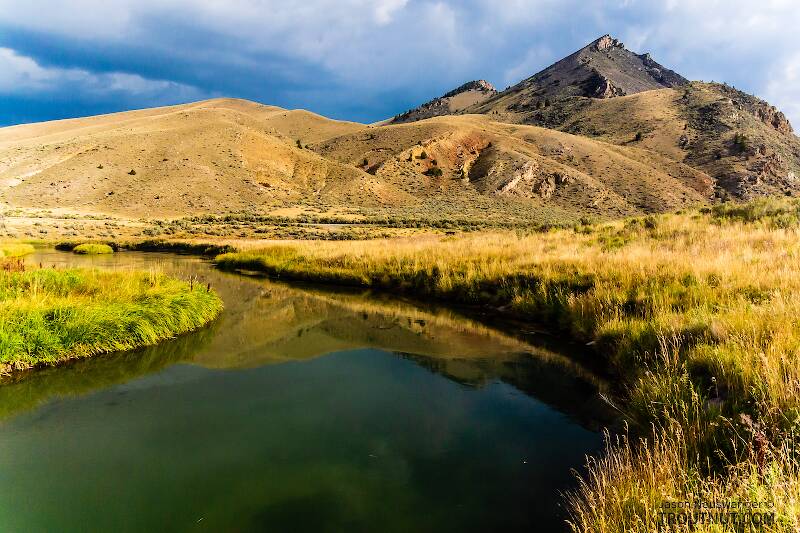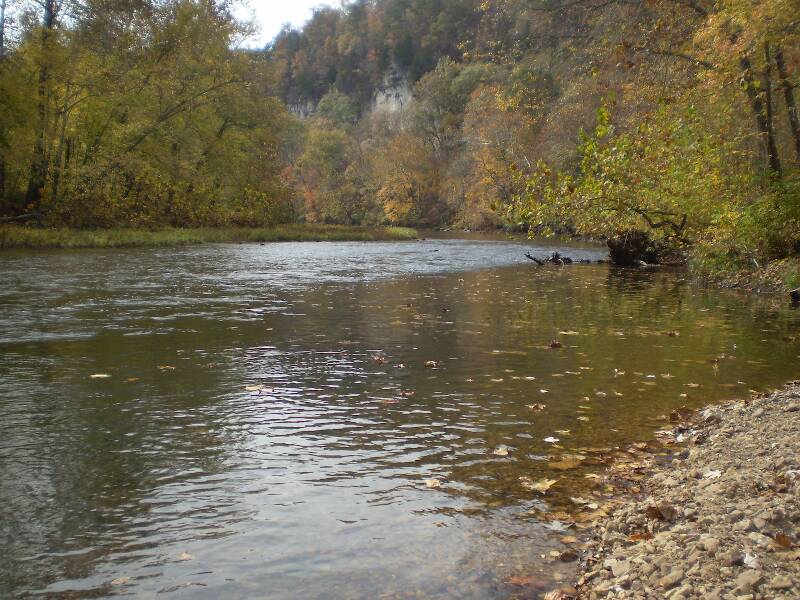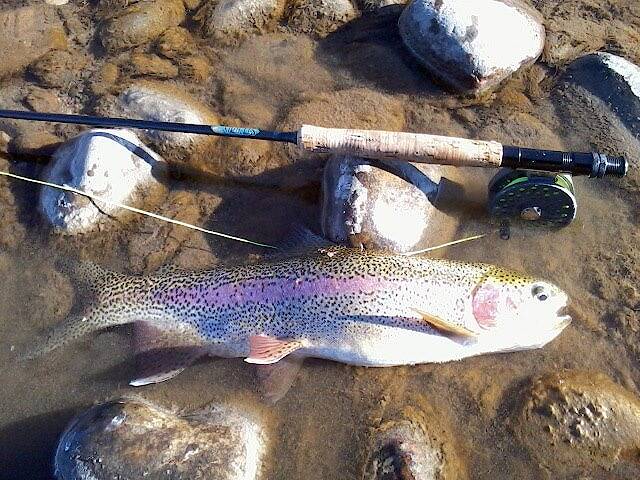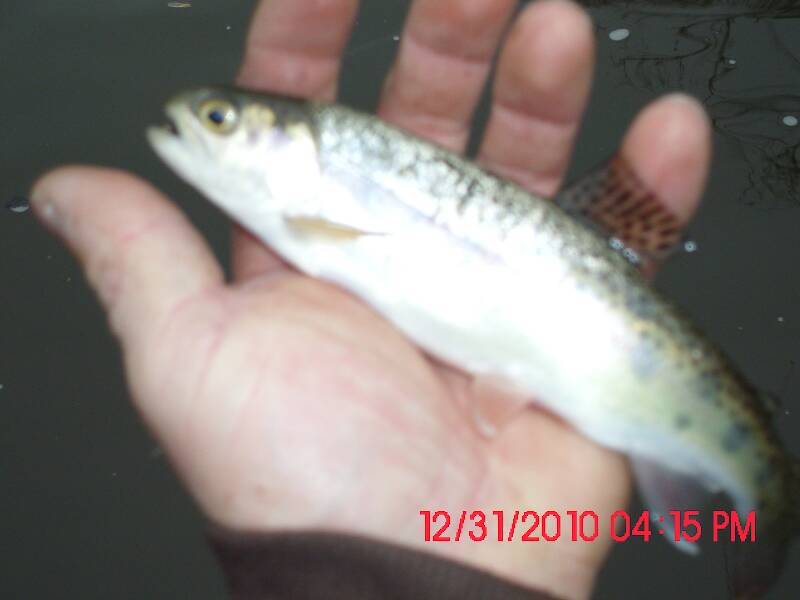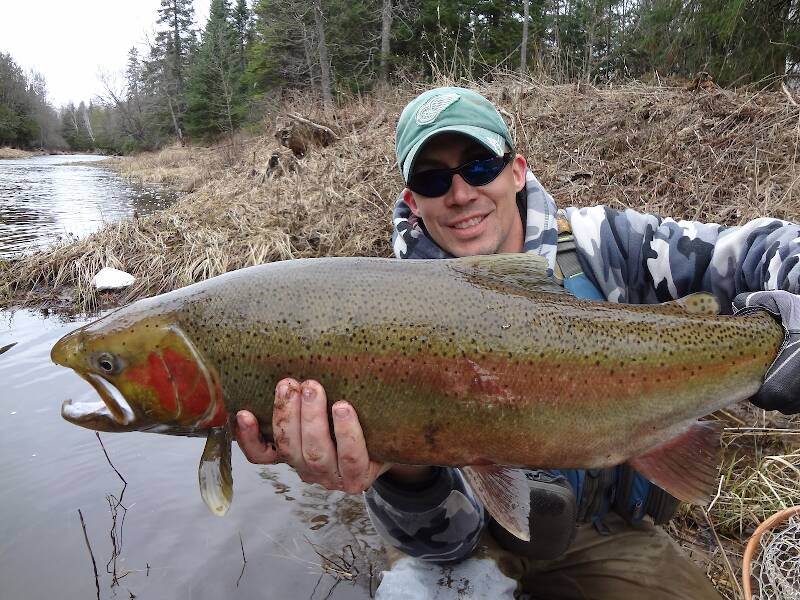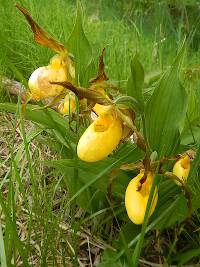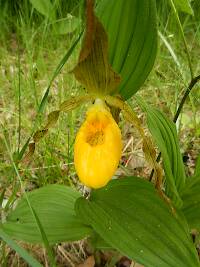
Blue-winged Olives
Baetis
Tiny Baetis mayflies are perhaps the most commonly encountered and imitated by anglers on all American trout streams due to their great abundance, widespread distribution, and trout-friendly emergence habits.
Featured on the forum

This one pretty clearly keys to Kogotus, but it also looks fairly different from specimens I caught in the same creek about a month later in the year. With only one species of the genus known in Washington, I'm not sure about the answer to this ID.

Troutnut is a project started in 2003 by salmonid ecologist Jason "Troutnut" Neuswanger to help anglers and
fly tyers unabashedly embrace the entomological side of the sport. Learn more about Troutnut or
support the project for an enhanced experience here.
Bcvizina on Dec 6, 2010December 6th, 2010, 7:09 am EST
I see that everyone is kinda in the small stream stuff right now. I thought it would be an interesting thread of what we throw at the little brookies. I've heard super bright colors in attractor patterns or super small naturals.
I think it would be interesting to hear what you throw first when you see a two foot wide section of creek.
I think it would be interesting to hear what you throw first when you see a two foot wide section of creek.
PaulRoberts on Dec 6, 2010December 6th, 2010, 7:50 am EST
For most small streams much of the time, regardless of trout species, fly choice can be pretty simple compared to big productive waters where fish have the luxury of being choosy. Any old fly will turn a lot of heads on most small streams. On most small brookie streams, fly choice is almost a moot point.
That said, I enjoy the entomology and create patterns that mimic food items trout see in particular streams. It has made such a difference at times, on many streams of all sizes, that that has become default for me. Trout do learn to recognize food and I learn to give em what they expect.
If you want to keep it simple, you can certainly do that, and choose flies based on water type. On high gradient streams you want something buoyant and low maintenance. On flat meadow streams you may need to go smaller and likely more accurate a representation. But most streams offer a variety of water types so one fly just won't cover.
Even on "easy" waters, there are places and times when fly choice can make a difference. On such waters I do get refusals, but the fish aren't usually large enough, and are numerous enough, to warrant a change -I just move on to the next fish or pool. In general, the calmer, flatter the water the more accurate and generally smaller flies need to be. Meadow streams and beaver ponds (unless over populated) can offer challenging fly choice and presentation, even for brookies. "Flat" water could also describe flat surface pockets on turbulent streams. Basically, if the fish can get a good look at a fly they are more apt to reject it, if it doesn't fit their expectations.
From my thread "High Country Gems" in the Trip Reports section:
"...
I returned 10 days later (the 18th) to find the flow very slightly diminished, and the fish MUCH spookier. Many “pots” between the boulders were glass calm. Just looking at them made me immediately think “midge on 7X”. But these are small mountain stream brookies, so I stuck with the 5X I still had on from yesterday, chasing browns down the watershed a ways. But after several successful stalks were rewarded with several flat refusals, including one compound rise and refusal from a BIG one (9incher!), I went to 6X and a #18 Baetis emerger.
..."
Hope this helps.
That said, I enjoy the entomology and create patterns that mimic food items trout see in particular streams. It has made such a difference at times, on many streams of all sizes, that that has become default for me. Trout do learn to recognize food and I learn to give em what they expect.
If you want to keep it simple, you can certainly do that, and choose flies based on water type. On high gradient streams you want something buoyant and low maintenance. On flat meadow streams you may need to go smaller and likely more accurate a representation. But most streams offer a variety of water types so one fly just won't cover.
Even on "easy" waters, there are places and times when fly choice can make a difference. On such waters I do get refusals, but the fish aren't usually large enough, and are numerous enough, to warrant a change -I just move on to the next fish or pool. In general, the calmer, flatter the water the more accurate and generally smaller flies need to be. Meadow streams and beaver ponds (unless over populated) can offer challenging fly choice and presentation, even for brookies. "Flat" water could also describe flat surface pockets on turbulent streams. Basically, if the fish can get a good look at a fly they are more apt to reject it, if it doesn't fit their expectations.
From my thread "High Country Gems" in the Trip Reports section:
"...
I returned 10 days later (the 18th) to find the flow very slightly diminished, and the fish MUCH spookier. Many “pots” between the boulders were glass calm. Just looking at them made me immediately think “midge on 7X”. But these are small mountain stream brookies, so I stuck with the 5X I still had on from yesterday, chasing browns down the watershed a ways. But after several successful stalks were rewarded with several flat refusals, including one compound rise and refusal from a BIG one (9incher!), I went to 6X and a #18 Baetis emerger.
..."
Hope this helps.
JAD on Dec 6, 2010December 6th, 2010, 9:28 am EST
I use a Elk Hair Caddis usually a tan one ,tied with deer hair .
Best
JaD
Best
JaD
They fasten red (crimson red) wool around a hook, and fix onto the wool two feathers which grow under a cock’s wattles, and which in colour are like wax.
Radcliffe's Fishing from the Earliest Times,
SlateDrake9 on Dec 6, 2010December 6th, 2010, 11:25 am EST
Freestones: On top I like to fish a Royal Coachman or X-Caddis. On bottom I fish a PT nymph.
Spring Creeks: On top I generally match the hatch or fish a micro caddis in olive or tan. On bottom the PT nymph.
Spring Creeks: On top I generally match the hatch or fish a micro caddis in olive or tan. On bottom the PT nymph.
Fishing with bait is like swearing in church.
-- Slate Drake
-- Slate Drake
Motrout on Dec 6, 2010December 6th, 2010, 12:56 pm EST
For small stream rainbows and brookies, I just don't think you can beat an Ausable Wulff in #12-#16. During the prime summer season for small stream trout, whether I'm in Missouri, Montana, or the Adirondacks, I probably spend more time with that fly on the end of my tippet than all others combined, and it's always done well. Sometimes I'll drop a little beadhead off the back-maybe a #18 Caddis Pupae, Hare's Ear, or Pheasant Tail, especially if the fish don't seem to be really looking up. Being able to match the hatch is sometimes helpful, but for small, unpressured streams, it's not really necessary on a day to day basis. Other good general small stream patterns are Parachute Adams, Elk Hair Caddis, hoppers,and Royal Wulffs, and egg patterns in various sizes. Add on to that a few Blue-winged Olive and brown drake imitations for the odd mayfly hatch that really gets the fish going, and you have my entire small stream box.
I know that got a little complicated towards the end, but suffice it to say that 90% of the time that I fish a small stream during the warm months I have a #14 Ausable Wulff tied on. All the other flies are more or less for special circumstances.
I know that got a little complicated towards the end, but suffice it to say that 90% of the time that I fish a small stream during the warm months I have a #14 Ausable Wulff tied on. All the other flies are more or less for special circumstances.
"I don't know what fly fishing teaches us, but I think it's something we need to know."-John Gierach
http://fishingintheozarks.blogspot.com/
http://fishingintheozarks.blogspot.com/
Dryfly on Dec 6, 2010December 6th, 2010, 1:00 pm EST
Small marabou leeches work for me. Nymphed or fished as a streamer.
Jmd123 on Dec 9, 2010December 9th, 2010, 8:28 am EST
I'm with JAD - an Elkhair caddis, size 12, in tan or light gray. Works on smallies and sunfish too!!
Jonathon
Jonathon
No matter how big the one you just caught is, there's always a bigger one out there somewhere...
Ericd on Dec 10, 2010December 10th, 2010, 12:50 pm EST
http://www.driftlessangler.com/estore/details/26588
I was thinking of buying one of these. Pink Squirrels are not fair to use on spring creeks sometimes.
Eric
I was thinking of buying one of these. Pink Squirrels are not fair to use on spring creeks sometimes.
Eric
Martinlf on Dec 11, 2010December 11th, 2010, 1:59 pm EST
Gonzo has some interesting all synthetic caddis and stonefly patterns. I believe they are all in his book. I've tied a Troth style caddis based on his pattern, with a poly yarn or hi vis wing, greased it with mucilin and fished it all afternoon. Floats like a cork. Bright yellow is very visible and brookies eat it up.
"He spread them a yard and a half. 'And every one that got away is this big.'"
--Fred Chappell
--Fred Chappell
Softhackle on Dec 11, 2010December 11th, 2010, 2:36 pm EST
Hi,
One of my favorites comes from Bergman's TROUT. Ray claimed it was a good all around fly for all species. It was originally conceived as a dry fly, but does very well as a wet fly. Tied on smaller hooks one can substitute gold wire for the tinsel.

Orange Fish Hawk
Hook: Standard wet fly 12-16
Thread: Black
Hackle: Badger hen
Rib: Flat Gold Tinsel
Body: Orange floss
Mark
One of my favorites comes from Bergman's TROUT. Ray claimed it was a good all around fly for all species. It was originally conceived as a dry fly, but does very well as a wet fly. Tied on smaller hooks one can substitute gold wire for the tinsel.

Orange Fish Hawk
Hook: Standard wet fly 12-16
Thread: Black
Hackle: Badger hen
Rib: Flat Gold Tinsel
Body: Orange floss
Mark
"I have the highest respect for the skilled wet-fly fisherman, as he has mastered an art of very great difficulty." Edward R. Hewitt
Flymphs, Soft-hackles and Spiders: http://www.troutnut.com/libstudio/FS&S/index.html
Flymphs, Soft-hackles and Spiders: http://www.troutnut.com/libstudio/FS&S/index.html
JAD on Dec 13, 2010December 13th, 2010, 4:42 am EST
Hi Mark
Mark did you die that neck cream, or purchase it.
John
Mark did you die that neck cream, or purchase it.
John
They fasten red (crimson red) wool around a hook, and fix onto the wool two feathers which grow under a cock’s wattles, and which in colour are like wax.
Radcliffe's Fishing from the Earliest Times,
Softhackle on Dec 13, 2010December 13th, 2010, 7:02 am EST
Hi John,
The neck is Badger Hen. If you look around you can find it. The list is very dark brown to black, while the outer edges of the fibers a are a creamy to golden color. There are also what is called a Silver Badger. If you want you could substitute a Brahma Hen dyed to match badger. I'd get in touch with Jim Slattery at his place to see if they carry them. I know they have Brahma Hen. The hackle in the photo was a natural badger-cream colored.
JimsFlyCo
Mark
The neck is Badger Hen. If you look around you can find it. The list is very dark brown to black, while the outer edges of the fibers a are a creamy to golden color. There are also what is called a Silver Badger. If you want you could substitute a Brahma Hen dyed to match badger. I'd get in touch with Jim Slattery at his place to see if they carry them. I know they have Brahma Hen. The hackle in the photo was a natural badger-cream colored.
JimsFlyCo
Mark
"I have the highest respect for the skilled wet-fly fisherman, as he has mastered an art of very great difficulty." Edward R. Hewitt
Flymphs, Soft-hackles and Spiders: http://www.troutnut.com/libstudio/FS&S/index.html
Flymphs, Soft-hackles and Spiders: http://www.troutnut.com/libstudio/FS&S/index.html
Rckymtn_fsh on Jan 4, 2011January 4th, 2011, 5:45 am EST
For turbulent high gradient brookie streams I love to use a size 14 or 16 Chernobyl Ant. They are foam so there is no need for floatant. For "flat" water I like any Adams or Mosquito variation. I also like using Copper Johns in green, blue or black down to size 24. My favorite fly by far though is an Theo Bakelaar fly called a Simple Wing, in size 16-24. A very versatile Caddis pattern!
Edit: Spelling
Edit: Spelling
"These brook trout will strike any fly you present, provided you don't get close enough to present it."
-- Dick Blalock
-- Dick Blalock
Benjlan on Jan 4, 2011January 4th, 2011, 2:58 pm EST
Hey Ya'll,
My absolute favorite is a #14-16 elk hair caddis, I don't know why but if I see them rising they will take it. I really like them for they're ability to stay dry on those fast ripples. My go to nymph is a bead head pheasant tail flashback, #16-18.
Ben
My absolute favorite is a #14-16 elk hair caddis, I don't know why but if I see them rising they will take it. I really like them for they're ability to stay dry on those fast ripples. My go to nymph is a bead head pheasant tail flashback, #16-18.
Ben
Bcvizina on Jan 11, 2011January 11th, 2011, 6:17 am EST
I've looked around and can't find the Simple Wing caddis pattern you speak of. Does anyone happen to have a picture of one of these guys?
Cwilliams
Posts: 2
Posts: 2
Cwilliams on Jan 11, 2011January 11th, 2011, 6:46 am EST
the smallest copperjohns, pheasanttails,and hares ears you can possibly use. Ive been having some great results on small trout with a size 18 phesantail
Pryal74 on Jan 12, 2011January 12th, 2011, 1:04 pm EST
I hear alot of good choices out there. Personally, on small Brook Trout streams, I shy away from dries unless I see fish taking them. Small, small and small is what I would go with. Pheasant tail nymph or a very small white maribou style fly moved swiftly along cover or through a run etc. I have watched good sized Brook Trout on the bottom of a feeding lie not even glance at my dry and then take a minnow shaped fly. Most Brookies take whatever they can find though. That's only my opinion.
-James Pryal
Into The Wild Fly Fishing
Into The Wild Fly Fishing
Rckymtn_fsh on Jan 16, 2011January 16th, 2011, 5:23 am EST
I tried to find a picture of the Simple Winged but couldn't find one. There is a picture in the book "Fly Patterns of the Umpqua Feather Merchants" on page 103 middle row, on the left. Here are the materials from the book;
Hook: TMC 3769, sizes 12-16 (I like them even smaller though)
Head: Gold Bead
Thread: Brown, 6/0
Abdomen: Pheasant tail fibers
Wing: Pearl or white Antron
A really easy pattern to tie and one of the most effective I have used (in my opinion).
And I definitely agree that Brookies will take most anything, especially the smaller the stream, the less picky they are...
Hook: TMC 3769, sizes 12-16 (I like them even smaller though)
Head: Gold Bead
Thread: Brown, 6/0
Abdomen: Pheasant tail fibers
Wing: Pearl or white Antron
A really easy pattern to tie and one of the most effective I have used (in my opinion).
And I definitely agree that Brookies will take most anything, especially the smaller the stream, the less picky they are...
"These brook trout will strike any fly you present, provided you don't get close enough to present it."
-- Dick Blalock
-- Dick Blalock
Shanti on Jan 16, 2011January 16th, 2011, 9:09 pm EST
On my small streams, terrestrials are important, mostly ants and beetles.
Most of the streams nearby is in no hurry at all, as they gently make their way through meadows, forests, cow farms and such. There's often a lot of food around and they can get picky.
Not seldom, the fly needs to be a quite accurate representation of what theyre keyed into at the moment.
When there is nothing to match I use Cdc 'n Elk, foam ants, sparse Adams.
For faster water Elk Hair Caddis, Adams/Royal Trude or anything else that floats well.
Most of the streams nearby is in no hurry at all, as they gently make their way through meadows, forests, cow farms and such. There's often a lot of food around and they can get picky.
Not seldom, the fly needs to be a quite accurate representation of what theyre keyed into at the moment.
When there is nothing to match I use Cdc 'n Elk, foam ants, sparse Adams.
For faster water Elk Hair Caddis, Adams/Royal Trude or anything else that floats well.
Somewhere, right now, a fish is rising.
And you´re at the computer..
And you´re at the computer..
Billj on May 9, 2011May 9th, 2011, 5:16 am EDT
Quick Reply
Related Discussions
Topic
Replies
Last Reply
2
Nov 4, 2012
by Aszat
by Aszat
1
Sep 14, 2010
by SlateDrake9
by SlateDrake9
0
May 25, 2012
by Jmd123
by Jmd123

